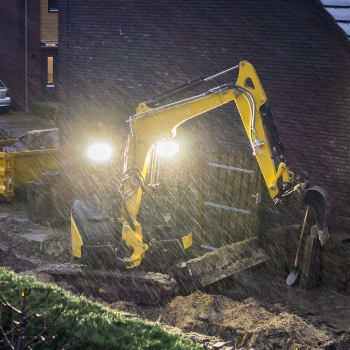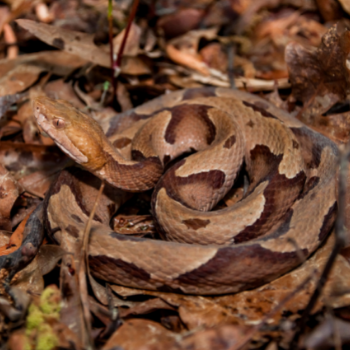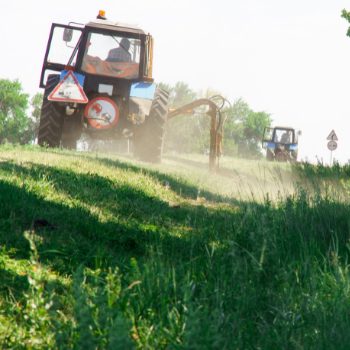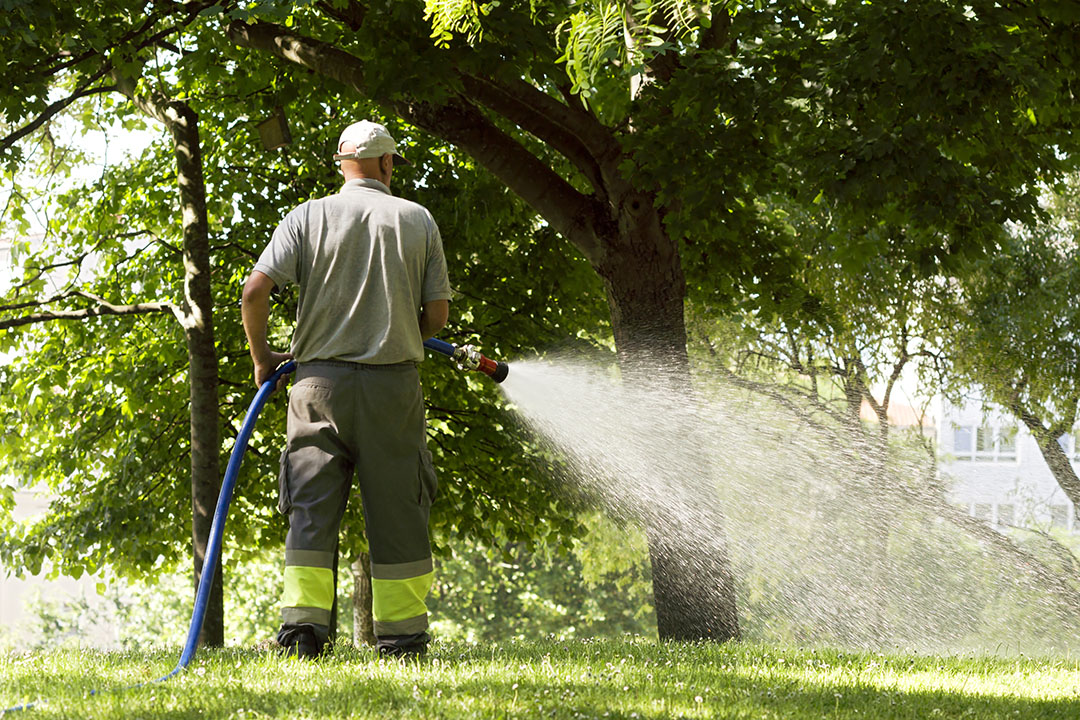Spring of 2021 officially began on March 20, but at that time, much of the country was still dealing with chilly weather. In fact, many people don’t consider spring to have fully arrived until April.
But as we welcome the warmer weather, employers must also be aware of dangers that are possible on their job site during these months that may not be as present during the rest of the year.
Learn about some of the most common spring hazards and find out how you can identify and address the specific dangers that may be found on your jobsite.
The Hazards of Springtime Storms

While storms can of course occur any time of year, severe thunderstorms are more likely to happen starting in the spring. This is because, according to the National Severe Storms Laboratory, storms need moisture and warmth to thrive.
One major danger that comes along with storms of nearly any intensity is lightning. These sudden strikes can appear anywhere within a storm, striking from cloud to cloud or, more dangerously, from cloud to ground. A typical bolt contains around 300 million volts of electricity, but can contain up to one billion volts.
Lightning can quickly start a fire in fields, trees or even buildings, and can be deadly to people. If there is lightning in your work area, all outdoor employees need to seek shelter indoors as quickly as possible.
A danger you may not consider but one that can be incredibly damaging is high winds. In fact, across the lower 48 states, winds account for half of all severe damage reports. Staying indoors, ideally not in a mobile structure, and away from windows is the best way to stay safe. High winds can come with any storm, so no matter where you work, this danger could quickly become a problem.
One of the most dangerous outcomes of severe weather is tornadoes. While some areas of the United States see much higher occurrences of tornadoes, they can, and have, formed in every state.
As tornadoes often develop quickly, it is crucial that all employees know what to do and where to go well before a situation arises. For example:
- Move to an interior room, such as a central bathroom or closet
- Stay away from windows and heavy equipment
- If outside, lie down in a ditch and cover your head with your arms
- Do not stay in a car or other vehicle and do not try to outrun the tornado
Storms bring with them many different dangers so you should be sure every worker knows what to do in any situation. It is a good idea to carry out regular drills so that, in a real emergency, there is less panic and hesitation.
Looking for more online safety training courses?
Keep an Eye Out for Dangerous Animals
As we head into the warmer months, this is often when you start to see bugs and insects not commonly encountered in cooler weather. Bees or wasps are typically the first things that come to mind when you think about insects, and different species are found across the country. If you are working outdoors, keep an eye out for nests and hives.
If you do see a nest or hive, don’t panic. It is a good idea to keep insect spray on hand to neutralize nests. You can also avoid wearing bright colors and strong, sweet-smelling scents, both of which could make you more attractive to these insects.
Ticks, which are part of the arachnid family, also become more problematic during the warmer months, starting in spring. Every year, an estimated 30,000 cases of Lyme disease are reported to the CDC, but it is thought that this is only 10% of the actual number of cases.
While bees and wasps are relatively easy to avoid, ticks can be difficult to see and can be found in every state. They typically live in thick, wooded areas or tall grass. Long sleeves and pants can help keep ticks off your body but after working in an area where ticks might be, be sure to do a full body check and wash your clothes.

Although snakes can be a hazard any time of year, April is typically when North American snakes start becoming more active, as they move out of hibernation and begin seeking warm, sunny spots. Depending on where you live, you may be more likely to encounter a venomous snake than in other states, but you should always be on the lookout.
Most snake bites occur simply because the snake wasn’t left alone — it’s as simple as that. If you do see one, try to give it a wide berth. Never attempt to move a snake; they will typically move along on their own. Wearing boots and long pants can help protect you from any run-in you may have, though.
In any case of a bite or sting, go to an emergency room or call 911 if the affected person has severe swelling or difficulty breathing, or has had such side effects in the past.
Prepare for Safety Hazards in The Home
Many people across the country choose the springtime to do a deep clean of their homes, garages and other areas around the household. This is a great idea, but there are some hazards you should keep an eye out for.
One big “home improvement” task many people do in the spring is testing their smoke alarms and carbon dioxide detectors. It is widely recommended that the batteries in both devices be changed once or twice each year.
While there isn’t necessarily any risk that comes along with testing your detectors and changing out their batteries, it is important to handle both correctly. You don’t want to accidentally damage either of these potentially life-saving devices!
As the weather gets a little bit warmer, spring is a great time to clean all the surfaces inside your home, but you need to make sure you do this safely. One major hazard is improper use of household cleaners. It is important to understand adverse reactions that some chemical mixtures create:
- Vinegar and bleach produces toxic chlorine gas
- Ammonia and bleach creates chloramines vapors
- Rubbing alcohol and bleach results in chloroform
- Vinegar and hydrogen peroxide can be used separately on the same surface, but when combined in one container, will produce peracetic acid
When doing any heavy indoor cleaning, be sure the room is well ventilated, either by turning on a fan or opening a window, and be sure you wear proper personal protective equipment, such as gloves or eyewear, when necessary.
If you recently — or even not-so-recently — did any painting around the house, it is likely you have leftover paint lying around. Now is a good time to go through the old material and properly dispose of any paint cans or aerosols you don’t want to keep.

Similar to the household cleaners noted above, many paints include hazardous chemicals. Any time you are working with paints (for painting, disposal or otherwise) be sure you are in a well-ventilated area and you keep away from children or pets.
Another big household danger that becomes more common starting in the spring is lawn care, which typically involves equipment like lawn mowers, weed eaters or chainsaws. No matter what piece of equipment you are using, you must understand how to safely operate the equipment, because these can quickly become dangerous or even deadly.
Understand Your Worksite Dangers
While understanding these general spring hazards is important, it is crucial that your entire workforce recognizes the specific dangers that may arise at your jobsite.
One step you need to take is reviewing the physical settings of your work area. Do you work near a river or other body of water that might be prone to flooding? Are you involved in construction using heavy equipment? By examining the environmental setting of your work, you can discover potential dangers to consider and prepare for.
Occupational health and safety experts have started focusing on educating employees and identifying potential issues rather than “damage control.” The hope is that taking a prevention-based approach and trying to stop an accident from ever happening will help companies save the time and money that comes along with mitigating the effects of workplace accidents.
A job hazard analysis (JHA), sometimes called a job safety analysis, task hazard analysis or job hazard breakdown, is one way for your company to identify and work to correct potential dangers in your specific workplace.
Conducting a JHA will help you understand the most dangerous jobs in your workplace, what those specific hazards entail, and corrective and preventive measures you can take to reduce or completely eliminate the likelihood of accidents, injuries and illnesses.
Training For Hazards Any Time of Year
So now that you have an idea of some of the basic spring hazards you need to be aware of, how do you go about keeping your employees safe?
Taking online safety training is convenient as each of your employees can receive training on a wide range of topics, from understanding specific OSHA regulations and to learning important tornado safety measures.
It’s never a wrong time to evaluate your current safety program, or implement a new one, to protect your employees. Contact SafetySkills today to see how we can help you improve your safety program, starting with spring safety measures.


